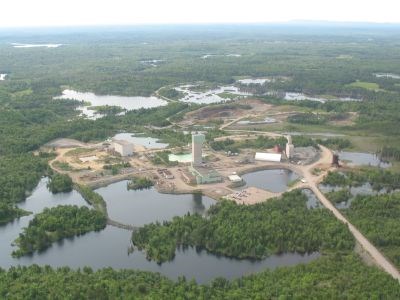A “constellation of factors” contributed to the fall of material that killed Norm Bisaillon and Marc Methé in 2014 at Lockerby Mine, an inquest into the deaths of the two men heard on Oct. 3.
While some of those factors are natural, others were entirely manmade, said David McCaskill, a lawyer with the Ministry of Labour. An excessive amount of water that led to corroded split sets, a section of the stope that had been widened beyond the capacity of the ground supports in place, and vibrations from explosives used in production blasting were all factors in the fatality.
These errors are the result of poor mining practices, McCaskill said as the inquest into the miners' deaths continued at the Northbury Hotel in Sudbury.
The final witness to take the stand during the inquest into the miners' deaths was Michael Kat, the Ministry of Labour mining engineer who investigated the fatality.
Kat said the stope had been developed about a year prior to the fatality. The crew ended up going off centre during development blasting, which ultimately ended up with a section of the stope measuring 6.5 metres wide, instead of the planned 4.5 metres.
However, the ground support in place was designed for a stope that was only 4.5 metres wide. The wider a stope, the greater the stress is on the rock surrounding it, Kat said.
The area was too wide for an arch support, so it was secured with split sets holding up a wire screen, then sprayed with shotcrete. In a proper setting, it's the arch that acts as the primary support, not the split sets, Kat said. Split sets are susceptible to corrosion, even ones made of galvanized steel.
“I have seen split sets corrode in six months,” Kat told the four-member jury.
Even the screen embedded in the shotcrete was corroded, he said. The entire support system in place slowly became more and more compromised as the year went on.
Workers started blasting in the stope again on April 14, 2014 – less than a month before Bisaillon and Methé were killed – when the shotcrete, used as a support system to prevent the ceiling from collapsing, failed.
On May 5, 2014, Methé and Bisaillon were working in that stope when the shotcrete collapsed. The width and corrosion of the split sets compromised the support, Kat said.
Their coworker, Joel Girard, had been working in that stope on the shift before Bisaillon and Methé went down. He said he heard a “bump” during his shift, and had mentioned it to Methé on the surface.
Kat said that microseismic event measured a 2.3 on the Richter scale. He said he looked for signs of seismic activity at the scene, and while he found nothing, he said he “can't rule out the fact the microseismic event didn't have an effect on the ground support, but I can't say for sure that it did, either.”
The now retired mining engineer said the conditions of the mine at that level “were not very good at all,” and that the fall of material was entirely preventable. It was poor mining practices that killed Bisaillon and Methé.
Kat said when he attended the scene, there was a “fair amount” of water coming out of the walls.
Furthermore, photos of the scene where the fatality took place were shown while Kat was on the stand. The photos showed a “stained” ceiling where the shotcrete fell onto Bisaillon and Methé, indicating lots of water, Kat said.
Lockerby Mine was owned by First Nickel Incorporated. The miner was fined $1.3 million by Ontario Court Justice David Stone after finding the company guilty of six of eight charges under the Ontario Occupational Health and Safety Act. Charges included allowing water to accumulate in an underground and failing to ensure an effective ground control support system was in place.
However, First Nickel went bankrupt in early 2015.
All evidentiary testimony in the inquest is now complete. The jury is expected to come back with their recommendations today.
This story was originally published on Sudbury.com.




